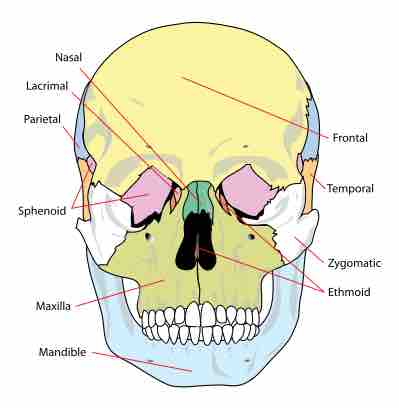A joint is the location at which two or more bones make contact. They are constructed to allow movement (except for skull bones), provide mechanical support, and are classified structurally and functionally. Structural classification is determined by how the bones connect to each other, while functional classification is determined by the degree of movement between the articulating bones. In practice, there is significant overlap between the two types of classifications.
Structural classification names and divides joints according to the type of binding tissue that connects the bones to each other. There are three structural classifications of joints:
Fibrous joints are joined by dense irregular connective tissue that is rich in collagen fibers.
Cartilaginous joints are joined by cartilage.
Synovial joints are those in which the bones are not directly joined. These joints have a synovial cavity and are united by the dense irregular connective tissue that forms the articular capsule normally associated with accessory ligaments.
Characteristics of Fibrous Joints
Fibrous joints are connected by dense connective tissue consisting mainly of collagen. These joints are also called fixed or immovable joints because they do not move. Fibrous joints have no joint cavity and are connected via fibrous connective tissue. The skull bones are connected by fibrous joints called sutures. The skull bones of a fetus are unfused so that they can move over each other slightly to compress skull size during birth. After birth, the bones slowly begin to fuse to become fixed, making the skull bones immovable in order to protect the brain from impact.
Syndesmoses of long bones and gomphoses of teeth are also types of fibrous joints. The movement of the root within a gomphosis has a threefold effect. It lessens some of the impact between the upper and lower teeth in biting. It also pumps blood and lymph from the periodontal membrane into the dental veins and lymph channels and stimulates sensory nerve terminals in the membrane to send signals to the brain centers that control the muscles of mastication.

Fibrous Joints
The adult skull is normally made up of 22 bones. Except for the mandible, all are joined together by sutures, semi-rigid articulations formed by bony ossification. The presence of Sharpey's fibers permit a little flexibility.